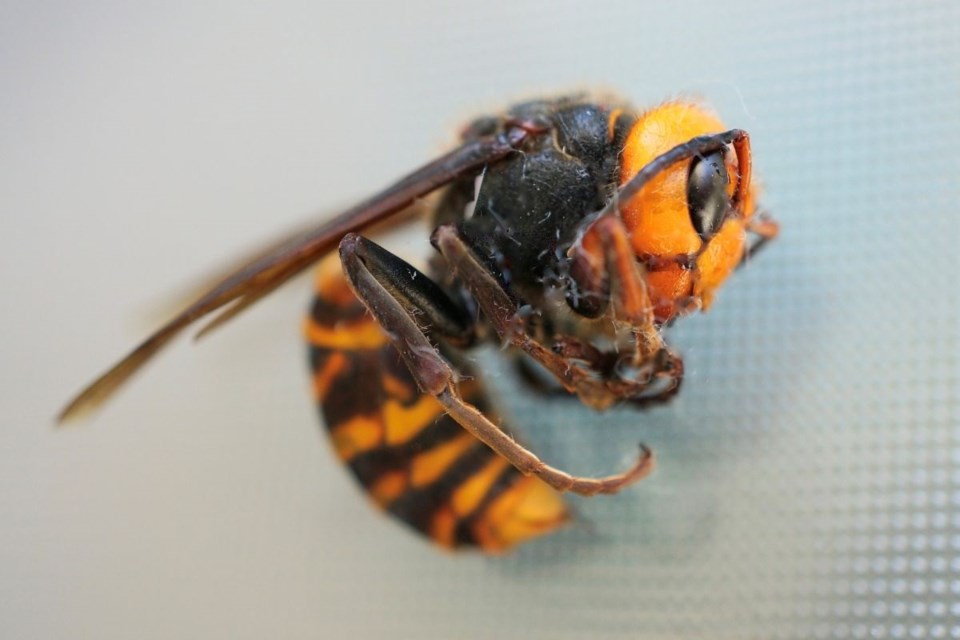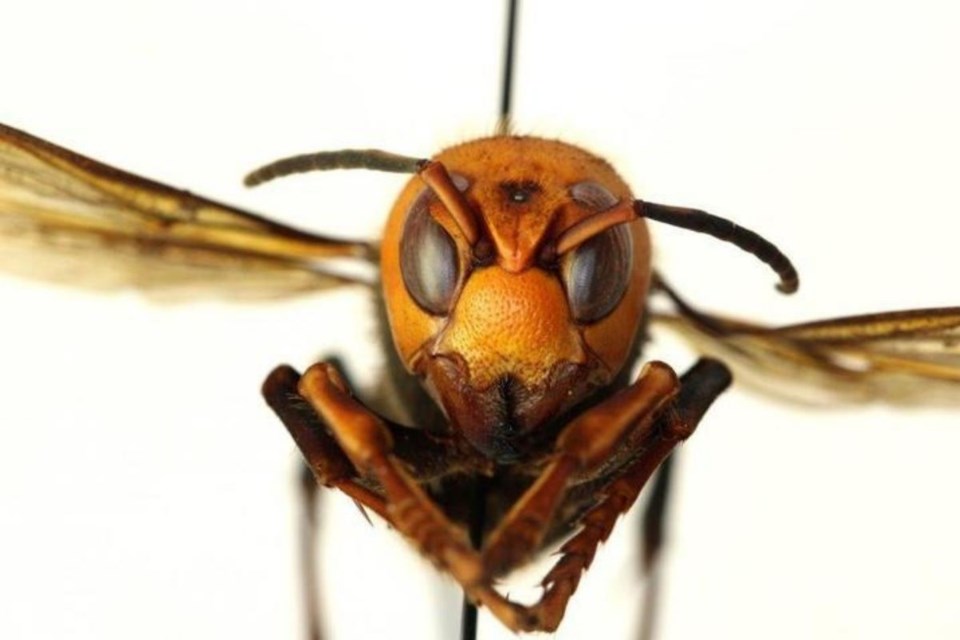A Richmond landscaper is warning residents to keep an eye out for the potentially dangerous Asian giant hornet, after an unconfirmed sighting in Steveston.
Don Pitcairn, who runs Green Team Gardening, said one of his employees is convinced one of the hornets – the largest of its kind in the world and an invasive species – flew onto a bush next to him at a strata complex near Britannia Heritage Shipyards earlier this week.
Pitcairn said he and his staff know their insects very well, having been stung numerous times even recently by all kinds of hornets.
And he said his employee, who was “freaked out” by the size of the hornet, watched as the two-inch long insect grabbed a honey bee from a flowering bush and took off.
“We’ve been looking out for this thing because I’ve heard reports of them being spotted a long way from the (U.S.) border, where they were first spotted last fall,” Pitcairn told the Richmond News.
“My worker said the Asian giant hornet grabbed the bee and headed south towards Shady Island.
“It was orange and black and about two inches long. It had huge jaws on it. I queried him on what he saw and he was adamant it was an Asian giant hornet.”
Two weeks ago, Pitcairn and his team ran into a nest of bald-faced hornets, getting stung multiple times, so “we know what they look like; and this wasn’t it.”
Pitcairn said they’ve alerted the Invasive Species Council of BC (ISCBC), but were told that they need a visual or actual confirmation, either as a photo or alive or dead in a jar, before they can look into it.
“I’m going to make some traps out of pop bottles and hang them in that courtyard in Steveston to see if I can catch one,” added Pitcairn.
“I do not want them here. We’ve warned all the stratas we service in Steveston to be on the look-out.”
The News has reached out to ISCBC for more information.
The Asian giant hornets are found throughout South and East Asia and were likely brought to North America accidentally on container ships, according to ISCBC.
They were first seen in B.C. in 2019 in Nanaimo and, following this discovery, the B.C. government and local beekeepers destroyed the nest.
Multiple individual dead hornets have been found in the southern Fraser Valley region in 2020, but no nests have been found on mainland B.C. as of November 2020.
In October 2020, officials destroyed a nest directly over the US-Canada border in Blaine, Washington.
Asian giant hornets typically nest in underground cavities, or above ground in tree stumps of forested areas.
They feed on insects and are particularly dangerous to honeybee hives. If they establish in B.C., they may pose a serious threat to the local beekeeping and commercial pollination industries, which in turn will have serious consequences for B.C. agriculture.
HOW TO IDENTIFY
The head is bright orange with large jaws and entirely black eyes. The thorax (where the legs and wings attach) is dark brown or black, and the wings are tinted a dark brown. The abdomen has regular black and orange horizontal stripes.
Depending on the bee caste (drone, worker or queen) the size varies between 2.5 cm to 5 cm.
To report a sighting, take a photo of the hornet and log onto https://bcinvasives.ca/take-action/report/.




